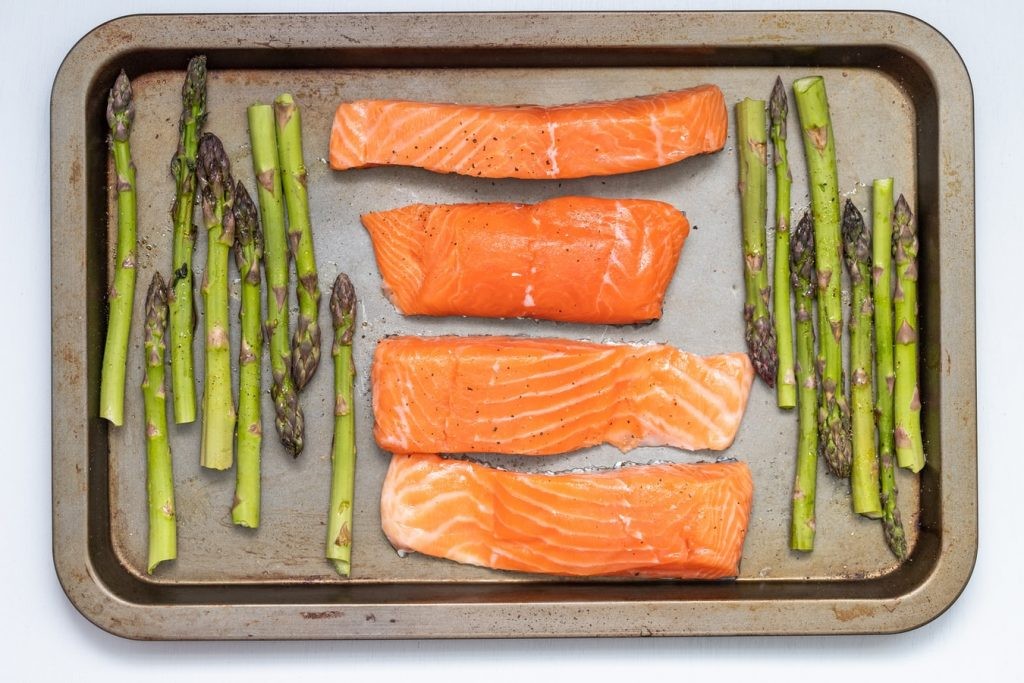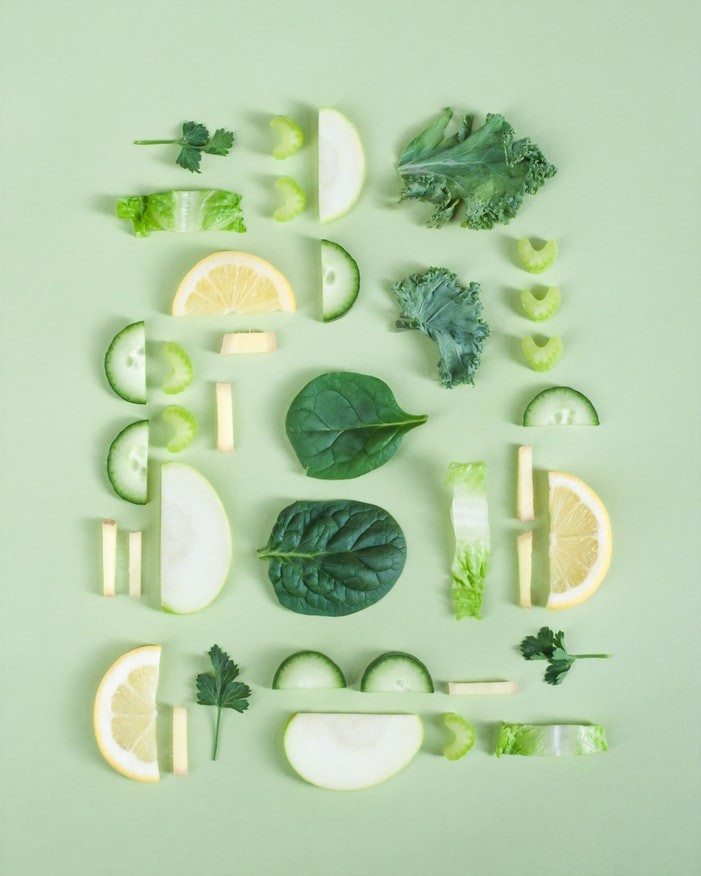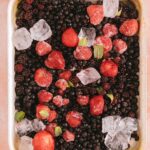What Foods Are Good For Headaches? Discover the culinary secrets to soothing head pain and reducing migraine frequency, all while nourishing your body with wholesome ingredients. At FOODS.EDU.VN, we believe in the power of food as medicine, offering solutions to manage headache symptoms through dietary adjustments. Let’s explore the delightful world of headache-friendly foods and drinks, providing you with practical tips and expert advice for long-term relief.
1. Understanding Headaches and Their Triggers
Headaches are a common ailment, but understanding their root causes is crucial for effective management. The International Classification of Headache Disorders identifies over 150 types of headaches, broadly categorized as migraine, tension, cluster, and secondary headaches. These can range from mildly irritating to severely debilitating, significantly impacting quality of life. Identifying your specific type of headache is the first step toward finding relief.
Triggers vary significantly from person to person, making individualized dietary approaches essential. Common triggers include:
- Dietary Factors: Certain foods and drinks, such as aged cheeses, processed meats, alcohol (especially red wine), and caffeine, are known to provoke headaches in susceptible individuals.
- Environmental Factors: Changes in weather patterns, barometric pressure fluctuations, and exposure to strong odors or bright lights can also trigger headaches.
- Lifestyle Factors: Stress, irregular sleep patterns, dehydration, and skipping meals are significant contributors to headache frequency and intensity.
- Hormonal Factors: Fluctuations in hormone levels, particularly in women, can lead to menstrual migraines or headaches associated with pregnancy or menopause.
Understanding these triggers is the initial step toward tailoring your diet to minimize headache occurrences. Keeping a detailed food diary, noting when headaches occur and what you consumed beforehand, can help identify personal triggers.
2. The Role of Diet in Headache Management
The food we consume plays a vital role in managing headaches. Specific foods and drinks can either trigger or alleviate headache symptoms, highlighting the significance of a well-informed dietary approach. At FOODS.EDU.VN, we emphasize the importance of evidence-based dietary strategies to manage headaches effectively.
2.1. Foods to Avoid
Certain foods have been identified as common headache triggers. Eliminating or reducing these from your diet may significantly decrease headache frequency and severity.
| Food Group | Common Trigger Foods | Why to Avoid |
|---|---|---|
| Dairy | Aged cheeses, milk, buttermilk | Contain tyramine and casein, which can trigger migraines in sensitive individuals. |
| Alcohol | Red wine, beer, champagne, mixed drinks | Can cause dehydration, blood vessel dilation, and contain sulfites and tannins known to trigger headaches. |
| Processed Meats | Hot dogs, lunch meats, bacon | High in nitrates and nitrites, which can dilate blood vessels and trigger migraines. |
| Caffeine | Coffee, tea, chocolate, energy drinks | Can cause rebound headaches when withdrawn and may exacerbate anxiety and sleep disturbances, contributing to headache frequency. |
| Artificial Sweeteners | Aspartame, sucralose, saccharin | Linked to neurological effects and can trigger headaches in some people. |
| Fermented & Pickled Foods | Sauerkraut, kimchi, pickles, soy sauce | High in histamines and tyramine, which can affect blood vessel function and trigger headaches. |
| Foods with MSG | Soy sauce, packaged snacks, processed foods, meat tenderizers | Monosodium glutamate (MSG) is a flavor enhancer that can excite nerve cells and trigger migraines. |
| Citrus Fruits | Oranges, lemons, grapefruits | Contain tyramine, which can affect blood pressure and trigger headaches in sensitive individuals. |
| Chocolate | Milk chocolate, dark chocolate (in some cases) | Contains caffeine and phenylethylamine, which can trigger migraines in susceptible individuals. |
| Nuts & Seeds | Peanuts, tree nuts (in some cases) | Some individuals may be sensitive to compounds in nuts and seeds that can trigger headaches. |


2.2. Foods to Embrace
On the flip side, certain foods can help alleviate headaches and promote overall well-being. Incorporating these into your diet can be a delicious and effective way to manage headache symptoms.
| Food Group | Headache-Friendly Foods | Why They Help |
|---|---|---|
| Leafy Greens | Spinach, kale, Swiss chard, collard greens | Rich in magnesium, B vitamins, and antioxidants, which can reduce inflammation and relax blood vessels. |
| Fatty Fish | Salmon, mackerel, cod, herring | High in omega-3 fatty acids, which have anti-inflammatory properties and can help reduce headache frequency. Also contain vitamin D and coenzyme Q10, which have been shown to relieve migraines. |
| Fruits | Bananas, avocados, apricots, figs, melons, berries | Rich in magnesium, potassium, and antioxidants, which support nerve function, hydration, and reduce inflammation. Bananas provide a dose of potassium, magnesium, B vitamins, and complex carbohydrates, all of which contribute to reducing headache pain. |
| Nuts & Seeds | Almonds, walnuts, cashews, chia seeds, flaxseeds, sunflower seeds, pumpkin seeds | Excellent sources of magnesium, vitamin E, and omega-3 fatty acids, which relax blood vessels, control hormonal fluctuations, and reduce inflammation. Almonds and other nuts can provide immediate relief for some people experiencing a headache. |
| Whole Grains | Quinoa, barley, buckwheat, oats, brown rice | Provide complex carbohydrates, which help stabilize blood sugar levels and prevent hypoglycemia-induced headaches. Also rich in nutrients like vitamin E, B vitamins, iron, coenzyme Q10, magnesium, and fiber. |
| Legumes | Lentils, beans, peas, chickpeas | Contain protein, fiber, magnesium, and potassium, which help maintain blood sugar levels, relieve blood vessel constriction, and provide coenzyme Q10, which may reduce migraine duration. |
| Ginger | Fresh ginger, ginger tea, ginger supplements | Contains natural oils with chemical compounds that increase serotonin and reduce inflammation. Studies show it can significantly decrease headache severity in patients with acute migraines without aura. |
| Water | Plain water, herbal teas | Essential for preventing dehydration, a known trigger for headaches. Staying hydrated supports overall body function and helps maintain proper blood volume and circulation. Aim for 11 cups for women and 16 cups for men daily. |
| Hot Peppers | Jalapenos, habaneros, cayenne | Contain capsaicin, which can numb the brain’s trigeminal nerve and inhibit the neurotransmitter responsible for causing migraine pain. Also help open up clogged sinuses, relieving sinus headaches. Rich in vitamins C, A, B, and E. |
| Decaffeinated Beverages | Decaf coffee, herbal teas (peppermint, ginger) | Provide hydration and comfort without the caffeine, which can trigger rebound headaches. Peppermint tea can reduce stress and anxiety, while ginger tea can reduce nausea and vomiting, common migraine symptoms. |
3. Specific Foods and Their Headache-Relieving Properties
Let’s delve deeper into specific foods and drinks and their unique benefits in managing headaches.
3.1. Magnesium-Rich Foods
Magnesium is an essential mineral that plays a crucial role in nerve function, blood sugar control, and blood pressure regulation. Studies have shown that magnesium deficiency is linked to migraines, and increasing magnesium intake can help reduce headache frequency and severity. A 2021 study found that dietary intake of magnesium-rich foods may lower the odds of developing a migraine.
- Dark Leafy Greens: Spinach, kale, and Swiss chard are excellent sources of magnesium.
- Avocado: A versatile fruit packed with magnesium and healthy fats.
- Bananas: A convenient and potassium-rich snack that also provides magnesium.
- Almonds and Cashews: Nuts are a great source of magnesium and healthy fats.
- Whole Grains: Provide magnesium along with fiber and other essential nutrients.
- Black Beans: A hearty legume rich in magnesium and protein.
3.2. Omega-3 Fatty Acids
Omega-3 fatty acids are essential for brain health and have potent anti-inflammatory properties. Consuming foods rich in omega-3s can help reduce inflammation and lower the frequency of severe headaches or migraines.
- Fatty Fish: Mackerel, salmon, cod liver oil, herring, oysters, and sardines are excellent sources of omega-3 fatty acids.
- Flaxseed and Chia Seeds: Plant-based sources of omega-3s that can be easily added to smoothies, yogurt, or oatmeal.
- Walnuts: A healthy snack rich in omega-3s and antioxidants.
- Soybeans: Including edamame, which is another good source of omega-3s and protein.
3.3. Fiber-Rich Foods
Fiber is crucial for maintaining stable blood sugar levels and promoting digestive health. A diet rich in fiber can help decrease the frequency of migraines or severe headaches.
- Whole Grains: Oats, quinoa, and brown rice provide complex carbohydrates and fiber.
- Lentils and Peas: Versatile legumes that are rich in fiber and protein.
- Beans: Black beans, kidney beans, and chickpeas are excellent sources of fiber.
- Fruits: Apples, berries, and pears provide fiber along with vitamins and antioxidants.
- Vegetables: Broccoli, Brussels sprouts, and carrots are rich in fiber and nutrients.
3.4. Water and Hydration
Dehydration is a well-known trigger for headaches. Ensuring adequate hydration is essential for preventing and alleviating headaches. The recommendation is for adult women to drink 11 cups and men to drink 16 cups of water daily.
- Plain Water: The most essential source of hydration.
- Herbal Teas: Peppermint, ginger, and chamomile teas can provide hydration and additional benefits.
- Fruits and Vegetables with High Water Content: Watermelon, cucumbers, and strawberries can help boost hydration.
3.5. Whole Foods and Plant-Based Diets
Adopting a whole-food, plant-based diet can significantly reduce headache frequency or even prevent them altogether. These diets emphasize nutrient-dense foods that provide essential vitamins, minerals, and antioxidants. Many of these foods are anti-inflammatory, which may play a role in reducing migraine experiences.
- Dark Green Leafy Vegetables: Spinach, kale, and collard greens.
- Fresh Fruits and Vegetables: A variety of colorful fruits and vegetables.
- Legumes: Lentils, beans, and peas.
- Whole Grains: Quinoa, oats, and brown rice.
- Nuts and Seeds: Almonds, walnuts, chia seeds, and flaxseeds.
4. The Importance of a Food Diary
Identifying personal headache triggers is essential for effective management. Keeping a detailed food diary can help you pinpoint specific foods or drinks that may be contributing to your headaches.
- Record Everything You Eat and Drink: Be meticulous in noting every item consumed, including portion sizes and preparation methods.
- Note Headache Symptoms: Record the time, intensity, and characteristics of any headaches.
- Track Other Factors: Include details about stress levels, sleep patterns, weather conditions, and any medications taken.
- Analyze Your Data: Look for patterns and correlations between specific foods and headache occurrences.
This information can be invaluable in identifying and eliminating potential triggers from your diet.
5. Delicious and Nutritious Recipes for Headache Relief
Incorporating headache-friendly foods into your diet doesn’t have to be a chore. Here are some delicious and nutritious recipes to help you manage headaches:
5.1. Magnesium-Boosting Green Smoothie
This smoothie is packed with magnesium-rich ingredients to help soothe headaches and promote relaxation.
- 1 cup spinach
- 1/2 banana
- 1/4 avocado
- 1 tablespoon almond butter
- 1 cup almond milk
- Ice (optional)
Combine all ingredients in a blender and blend until smooth. Enjoy this creamy and nutrient-packed smoothie for a headache-relieving treat.
5.2. Omega-3 Rich Salmon Salad
This salad is a delicious way to incorporate omega-3 fatty acids into your diet, helping to reduce inflammation and prevent headaches.
- 4 oz grilled salmon
- 2 cups mixed greens
- 1/2 cup cherry tomatoes
- 1/4 cup sliced cucumber
- 1/4 avocado, diced
- 2 tablespoons olive oil
- 1 tablespoon lemon juice
- Salt and pepper to taste
Combine the mixed greens, cherry tomatoes, cucumber, and avocado in a bowl. Top with grilled salmon. Drizzle with olive oil and lemon juice. Season with salt and pepper to taste. Enjoy this refreshing and headache-friendly salad.
5.3. Ginger and Turmeric Anti-Inflammatory Tea
This soothing tea combines the anti-inflammatory properties of ginger and turmeric to help relieve headache symptoms.
- 1 cup water
- 1 inch fresh ginger, sliced
- 1/2 teaspoon turmeric powder
- 1 tablespoon lemon juice
- 1 teaspoon honey (optional)
Bring water to a boil in a saucepan. Add ginger and turmeric. Simmer for 10 minutes. Strain the tea into a cup. Add lemon juice and honey, if desired. Sip slowly and enjoy the soothing benefits of this anti-inflammatory tea.
6. Lifestyle Modifications for Headache Management
In addition to dietary changes, certain lifestyle modifications can significantly reduce headache frequency and severity.
- Manage Stress: Practice relaxation techniques such as meditation, yoga, or deep breathing exercises.
- Maintain a Regular Sleep Schedule: Aim for 7-8 hours of quality sleep each night.
- Stay Hydrated: Drink plenty of water throughout the day.
- Exercise Regularly: Engage in moderate physical activity to reduce stress and improve overall well-being.
- Limit Alcohol and Caffeine: These substances can trigger headaches in susceptible individuals.
- Avoid Skipping Meals: Maintain stable blood sugar levels by eating regular, balanced meals.
7. Expert Advice and Recommendations
Medical research has identified specific nutritional vitamins, minerals, and other elements that can relieve headaches from migraines and different types.
7.1. Consulting Healthcare Professionals
It’s essential to consult with healthcare professionals, such as doctors, neurologists, or registered dietitians, for personalized advice and treatment plans. They can help you identify underlying causes of your headaches and develop a comprehensive strategy for managing them.
7.2. Staying Informed and Up-to-Date
Keep abreast of the latest research and recommendations regarding headache management. Reliable sources include:
- American Migraine Foundation: Offers resources and information about migraines and headache disorders.
- National Headache Foundation: Provides education, support, and advocacy for individuals with headaches.
- FOODS.EDU.VN: Your trusted source for evidence-based dietary advice and delicious, headache-friendly recipes.
8. Debunking Common Myths About Headaches and Diet
There are several myths surrounding headaches and diet. Let’s debunk some of the most common misconceptions:
-
Myth: Chocolate always triggers headaches.
- Fact: While chocolate can be a trigger for some individuals, it’s not a universal trigger. Dark chocolate, in moderation, may even provide benefits due to its magnesium content.
-
Myth: Caffeine is always bad for headaches.
- Fact: Small amounts of caffeine can sometimes relieve headaches by constricting blood vessels. However, excessive caffeine consumption or withdrawal can trigger headaches.
-
Myth: All nuts are headache triggers.
- Fact: While some people may be sensitive to certain nuts, many nuts are rich in magnesium and can help alleviate headaches.
-
Myth: All fruits are safe for headache sufferers.
- Fact: Citrus fruits, in particular, may trigger headaches in some individuals due to their tyramine content.
Understanding the facts can help you make informed dietary choices and avoid unnecessary restrictions.
9. Frequently Asked Questions (FAQs)
-
What are the most common food triggers for headaches?
Common food triggers include aged cheeses, processed meats, alcohol, caffeine, artificial sweeteners, and foods with MSG.
-
Can dehydration cause headaches?
Yes, dehydration is a well-known trigger for headaches. Ensure you’re drinking enough water throughout the day.
-
Are there specific vitamins that can help with headaches?
Magnesium, B vitamins (especially B2, B6, B12, and folate), and vitamin D have been shown to help reduce headache frequency and severity.
-
How quickly can dietary changes impact headache frequency?
It may take several weeks or months to see significant changes in headache frequency. Consistency and patience are key.
-
Is it necessary to eliminate all potential trigger foods from my diet?
Not necessarily. It’s important to identify your personal triggers through a food diary and eliminate those specific foods.
-
Can exercise help with headaches?
Yes, regular exercise can help reduce stress and improve overall well-being, which can reduce headache frequency.
-
What are some good snacks for headache relief?
Almonds, bananas, and a small piece of dark chocolate can provide quick relief for some people.
-
Can herbal teas help with headaches?
Yes, peppermint tea, ginger tea, and chamomile tea can help soothe headaches and promote relaxation.
-
Is there a permanent cure for migraines?
Unfortunately, there is no permanent cure for migraines. However, dietary and lifestyle changes can significantly reduce their frequency and severity.
-
Where can I find more information about headache-friendly diets?
You can find more information and delicious recipes at FOODS.EDU.VN, the American Migraine Foundation, and the National Headache Foundation.
10. Take Action for Headache Relief with FOODS.EDU.VN
Ready to take control of your headaches through the power of food? At FOODS.EDU.VN, we provide the knowledge and resources you need to make informed dietary choices and live a headache-free life.
- Explore Our Recipe Collection: Discover delicious and headache-friendly recipes that will nourish your body and soothe your head.
- Read Expert Articles: Learn from our team of culinary experts and healthcare professionals about the latest research and recommendations for headache management.
- Join Our Community: Connect with others who understand the challenges of living with headaches and share your experiences and tips.
Visit FOODS.EDU.VN today and embark on your journey to a healthier, headache-free you.
FOODS.EDU.VN – Nourishing Your Body, Soothing Your Head
Address: 1946 Campus Dr, Hyde Park, NY 12538, United States
WhatsApp: +1 845-452-9600
Website: FOODS.EDU.VN
Remember, managing headaches is a journey, not a destination. With the right knowledge, tools, and support, you can take control of your headaches and live a fulfilling life. Start today with foods.edu.vn and discover the power of food as medicine!
